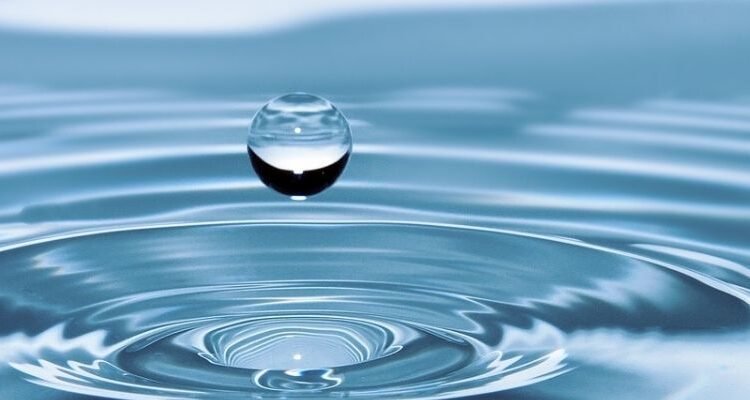Whether water is high-quality (excellent standard) or low-quality (inferior standard) determines what you can use it for.
Overall, water serves as the backbone of ecosystems, communities, and the environment, and thus prioritizing high water quality is critical.
Here’s what you should know about water quality, the factors that affect it, and the efforts required to safeguard water as a resource.
1. What is water quality?
Water quality refers to the characteristics of water that determine its suitability for various uses.
Water can be used for human consumption, aquatic life, agricultural activities, and recreation.
Numerous factors impact water quality, including physical, chemical, and biological.
Below, we’ll discuss everything you should know about water quality from the perspective of a landowner.
2. What are the key components of water quality?
![]()
![]() Physical characteristics
Physical characteristics
The key physical characteristics that determine water quality include temperature, turbidity (clarity), and color.
These factors will determine how water interacts with its surroundings as well as the effect it has on aquatic organisms and human beings when consumed or inhabited.
![]()
![]() Chemical composition
Chemical composition
Water’s chemical profile is shaped by pH level, dissolved oxygen content, nutrient concentrations, heavy metals, and contaminants.
Depending on these levels, water may or may not be suitable for human consumption and use or have the ability to support aquatic life.
![]()
![]() Biological indicators
Biological indicators
Both microorganisms and aquatic life that live in water serve as indicators of water quality.
When there are thriving populations of fish, insects, and plants, it is often an indicator that water quality is higher.
3. What should landowners know?
Landowners should be cognizant of water quality not only for their own potential uses but also for the well-being of the local environment.
Here’s a list of tips for how you can maintain your land and boost water quality.
![]()
![]() Identify all the sources of water on your property.
Identify all the sources of water on your property.
These sources may include streams, ponds, lakes, wells, or rivers.
Investigate how the water flows into your land, where it collects, and what your best water sources are.
![]()
![]() Invest in regular water testing to ensure you can use the water for drinking, irrigation, and recreational purposes.
Invest in regular water testing to ensure you can use the water for drinking, irrigation, and recreational purposes.
The most important parameters to test for are pH, dissolved oxygen, nutrient levels (nitrogen and phosphorus), bacteria, and potential contaminants.
![]()
![]() Recognize the environmental impact that your land use practices have.
Recognize the environmental impact that your land use practices have.
Whether you use your land for agriculture, construction, or landscaping, you have the potential to influence the water quality.
All the land uses named above can pollute water through runoff.
You’ll want to take care to minimize the use of harmful chemicals and fertilizers so that they don’t leach into those bodies of water.
![]()
![]() Implement erosion control measures that can prevent soil runoff into bodies of water.
Implement erosion control measures that can prevent soil runoff into bodies of water.
Key erosion control measures include planting crops, building buffer zones, and using sediment basins.
![]()
![]() Protect and maintain natural vegetation along water bodies.
Protect and maintain natural vegetation along water bodies.
These are known as riparian zones, and they play a critical role in filtering out pollutants and preventing erosion.
![]()
![]() Properly design and maintain your septic system to prevent groundwater contamination.
Properly design and maintain your septic system to prevent groundwater contamination.
![]()
![]() Avoid discharging any pollutants, chemicals, or wastewater directly into water bodies.
Avoid discharging any pollutants, chemicals, or wastewater directly into water bodies.
![]()
![]() Explore sustainable land management practices that promote soil health and reduce runoff.
Explore sustainable land management practices that promote soil health and reduce runoff.
We recommend investigating no-till farming, cover cropping, and agroforestry.
![]()
![]() Research local regulations and water quality standards that may apply to your property.
Research local regulations and water quality standards that may apply to your property.
If necessary, obtain permits so you can improve your water quality.
![]()
![]() Monitor and control invasive plant species that may harm water quality.
Monitor and control invasive plant species that may harm water quality.
Many of these plant species will disrupt ecosystems and crowd out native vegetation.
![]()
![]() Prioritize native plants in landscaping because they require fewer chemical fertilizers to maintain.
Prioritize native plants in landscaping because they require fewer chemical fertilizers to maintain.
They often also need less water which can reduce runoff and pollution.
![]()
![]() Avoid introducing non-native species that may disrupt local ecosystems and impact water quality.
Avoid introducing non-native species that may disrupt local ecosystems and impact water quality.
![]()
![]() Attend workshops and seminars that help educate you about water quality best practices.
Attend workshops and seminars that help educate you about water quality best practices.
![]()
![]() Seek guidance from local agricultural extension services.
Seek guidance from local agricultural extension services.
![]()
![]() Collaborate with neighbors, local environmental organizations, and government agencies to collectively address water issues in your area.
Collaborate with neighbors, local environmental organizations, and government agencies to collectively address water issues in your area.
4. What are water quality standards?
Water quality standards (WQS) are provisions approved by the EPA.
They’re used to describe the condition of a body of water and how it may need to be protected based on that condition.
States, territories, and authorized tribes establish WQS to protect human health and aquatic life.
The water quality standards help form the legal basis to control pollutants that enter the bodies of water in the U.S.
WQS are used in the following ways:
![]()
![]() To protect and propagate fish, shellfish, and wildlife
To protect and propagate fish, shellfish, and wildlife
![]()
![]() To promote recreation
To promote recreation
![]()
![]() To maintain a public drinking water supply
To maintain a public drinking water supply
![]()
![]() To allow for agricultural, industrial, navigational, and other purposes
To allow for agricultural, industrial, navigational, and other purposes
5. How are water quality standards developed?
It depends on the state, territory, and authorized tribe.
Each has a process for developing WQS.
Generally speaking, these groups will develop standards using a group process or informal public meeting.
Eventually, the standards will be proposed for public comment.
Most often, the public participated through public hearings.
Here is the procedure that states, territories, and authorized tribes often use to propose water quality standards.
![]()
![]() Monitoring, Assessment, and Reporting
Monitoring, Assessment, and Reporting
Scientists and researchers will collect data from various sources to monitor quality.
For instance, they may collect water samples from different bodies of water to gather information about pollutants and contaminants.
Research must be conducted to assess and understand the potential effects of water quality on human health, aquatic ecosystems, and other water uses.
![]()
![]() Reviewing Existing Standards Using Best Available Data and Technology
Reviewing Existing Standards Using Best Available Data and Technology
When reviewing the existing standards in place, scientists and researchers will use data and technology to assist them.
These tools continue to improve, which allows us greater access to information.
We can continue to improve water quality as this access to information advances over time.
![]()
![]() Revising Existing Standards and Public Input
Revising Existing Standards and Public Input
Water quality standards are based on various parameters like temperature, pH, dissolved oxygen, nutrients, and contaminants.
Official bodies work to amend these standards and take into account the new information that researchers and scientists have found.
Consider that WQS are designed to be protective of water use.
During this time, stakeholders (such as community members, environmental organizations, industries, governmental agencies, etc.) are invited to provide input during the development of WQS.
Often, this is done in the form of public hearings, workshops, or comment periods.
![]()
![]() Allowing the EPA to Review Proposed Standards
Allowing the EPA to Review Proposed Standards
The EPA is responsible for establishing and enforcing WQS as they are the U.S.’s primary environmental regulatory agency.
They help to develop criteria and create guidelines that govern water quality management and pollution control.
After the proposed standards are created, they will be reviewed for acceptance and implementation.
![]()
![]() Implementing EPA-Approved Standards for States, Territories, or Tribes
Implementing EPA-Approved Standards for States, Territories, or Tribes
After the standards are approved, states, territories, and tribes can implement them on their own.
The above steps are done in a continual loop as the U.S. constantly evaluates and reassesses its water quality and existing standards.
WQS must be periodically reviewed and revised based on new scientific findings, technological advancements, changes in water use, and shifts in public priorities.
6. What factors impact water quality?
Here are the top three factors that affect water quality.
![]()
![]() Human activities
Human activities
Humans are a major source of water pollution.
Between industrial discharge, agricultural runoff, improper waste disposal, and urban development, the bodies of water we use to sustain life are contaminated.
![]()
![]() Natural processes
Natural processes
Geological formations and weather events influence the mineral content and overall quality depending on the region you’re in.
![]()
![]() Climate change
Climate change
Climate change also has the potential to impact water quality.
In particular, rising temperatures and changing precipitation patterns will affect water availability and quality.
These factors can also exacerbate challenges related to droughts and floods.
7. Why is it so important to protect water quality?
Water is key to survival — for humans, plants, animals, and life in general.
For humans, around 60 percent of the body is made up of water.
If we don’t have water, we can only survive around 3 to 5 days.
Water allows us to flush out waste, regulate our internal temperature, transport nutrients, and moderate our digestion.
If you think about how integral water is for human beings, it makes sense that keeping water healthy is essential for daily use.
Here are the top reasons you should prioritize the protection of water quality on your land.
![]()
![]() Human health
Human health
As mentioned above, clean water is essential for human health.
Humans use water for drinking, cooking, and personal hygiene.
If water is poor in quality, then it can lead to waterborne diseases and prompt a variety of health complications.
![]()
![]() Ecosystem health
Ecosystem health
Similarly, aquatic ecosystems also rely on clean water to support fish, plants, and other species.
If there is contaminated water in a habitat, then it can lead to a decline in biodiversity or cause ecological imbalances.
![]()
![]() Agriculture and economy
Agriculture and economy
Poor water quality also affects agriculture, which is an industry that depends on water for irrigation and livestock.
If water has bacteria, waterborne illness, or other issues, then it can harm crop yields or reduce the viability of agricultural systems.
In turn, this affects food production and local economies.
If you’re a landowner who relies on farming or agricultural products, then you’ll want to closely monitor your water supply to ensure this isn’t a factor in food production challenges.
![]()
![]() Recreation and aesthetics
Recreation and aesthetics
High water quality also provides aesthetically pleasing recreational spaces for activities like swimming, boating, and fishing.
This improves the quality of life for communities.
If you live in an area with a lake or pond that you’d like to use recreationally, then it’s worth considering how you can keep the water clean and accessible to humans for their use.
8. How can the world collectively work on water quality?
If you’re interested in improving water quality on your land or in your area, you should use the following methods.
![]()
![]() First, consider regulatory frameworks.
First, consider regulatory frameworks.
This method is when governments establish water quality standards and regulations to help prevent pollution and ensure safe water for consumption.
If you’re not happy with the current water quality in your community, do some research to see what the current water regulations are.
Are they being followed in your area?
Could they be improved?
Who is the proper authority to address your concerns?
![]()
![]() Second, engage the community.
Second, engage the community.
Individuals can participate in local clean-up efforts.
As a landowner, you’re one of the individual stakeholders in your community.
If you realize that water quality is an issue, you can help advocate for water protection policies and begin to practice responsible waste disposal.
![]()
![]() Next, address industry responsibility.
Next, address industry responsibility.
Corporate entities and industries must adopt sustainable practices.
Individuals can do their fair share, but they won’t make a dent in water quality if businesses aren’t doing their part.
Start a discussion about waste management and reduced pollutant emissions for all actors in your community.
This will help to safeguard water quality on a grand scale.
![]()
![]() Finally, create educational initiatives for all.
Finally, create educational initiatives for all.
Everyone needs water, but not everyone is educated or aware of how their actions affect water quality.
Go out into your area and talk to the community, schools, businesses, and neighborhoods about fostering a culture of responsible water use and conservation.
9. What is the best way to protect water?
Protecting water quality is a collective responsibility.
We must work together as a community to prevent pollution, conserve water resources, and ensure water remains clean and available for the future.
Here are key ways you can protect water resources whether they’re on your property or not.
![]()
![]() Reduce pollution sources by properly disposing of household waste, chemicals, and hazardous materials
Reduce pollution sources by properly disposing of household waste, chemicals, and hazardous materials
![]()
![]() Minimize or eliminate the use of pesticides, fertilizers, or other chemicals that you have on your land to prevent them from leaching into groundwater resources
Minimize or eliminate the use of pesticides, fertilizers, or other chemicals that you have on your land to prevent them from leaching into groundwater resources
![]()
![]() Practice responsible land management by using sustainable agricultural practices and implementing erosion control measures
Practice responsible land management by using sustainable agricultural practices and implementing erosion control measures
![]()
![]() Implement proper waste disposal methods
Implement proper waste disposal methods
![]()
![]() Reduce plastic and litter and participate in local cleanup initiatives
Reduce plastic and litter and participate in local cleanup initiatives
![]()
![]() Conserve water by fixing leaks, using low-flow fixtures, and practicing responsible irrigation methods
Conserve water by fixing leaks, using low-flow fixtures, and practicing responsible irrigation methods
![]()
![]() Collect rainwater for irrigation purposes
Collect rainwater for irrigation purposes
![]()
![]() Develop green roofs, permeable pavements, rain gardens, and other green infrastructure to help manage stormwater runoff and reduce pollutants reaching water bodies
Develop green roofs, permeable pavements, rain gardens, and other green infrastructure to help manage stormwater runoff and reduce pollutants reaching water bodies
![]()
![]() Encourage farmers to adopt practices that minimize runoff and erosion
Encourage farmers to adopt practices that minimize runoff and erosion
![]()
![]() Promote cover cropping and agroforestry to improve soil health and water retention
Promote cover cropping and agroforestry to improve soil health and water retention
![]()
![]() Educate communities about the importance of water quality and raise awareness about how individual actions can impact it
Educate communities about the importance of water quality and raise awareness about how individual actions can impact it
![]()
![]() Advocate for policy changes that prioritize water quality protection.
Advocate for policy changes that prioritize water quality protection.
10. How does agriculture harm water quality?
If you’re a landowner who utilizes their land for agriculture, you should have a vested interest in protecting water quality.
Agriculture has both direct and indirect impacts on water quality.
It can lead to contamination and degradation of water bodies.
Here are the top ways that the industry affects water quality.
![]()
![]() Nutrient runoff
Nutrient runoff
Agriculture can sometimes require the excessive use of fertilizers to enhance the crop growth of nutrients like nitrogen and phosphorus in nearby water bodies.
These nutrients may cause eutrophication where plant growth depletes oxygen levels in the water and harms aquatic life.
![]()
![]() Soil erosion
Soil erosion
Improper land management practices like poor plowing and overgrazing can result in soil erosion.
When this occurs, topsoil can be carried away by runoff, and this can degrade water quality because topsoil has everything from pollutants to sediments and nutrients.
![]()
![]() Livestock waste
Livestock waste
If animal waste isn’t properly managed on a farm, then there can be runoff from manure.
When this contaminates water with high levels of nutrients and fecal matter, it can pose risks to both humans and aquatic ecosystems.
![]()
![]() Sedimentation
Sedimentation
Sedimentation can occur due to any activities that disturb the soil.
In agriculture, this includes tilling and construction.
When sediment runs off into water bodies, light can be obstructed which disrupts aquatic habitat.
![]()
![]() Irrigation practices
Irrigation practices
Poorly managed irrigation can cause over-application of water.
This will cause waterlogged soils and leaching of nutrients and chemicals into groundwater.
![]()
![]() Monoculture farming
Monoculture farming
Monoculture farming is when a single crop is grown over a vast area.
This type of farming has an increased vulnerability to pests and diseases, which can lead to a higher reliance on pesticides and fertilizers.
Overall, these challenges can contribute to water pollution because more chemicals must be used to manage the situation.
![]()
![]() Tillage and deforestation
Tillage and deforestation
When agricultural land is expanded, it contributes to deforestation.
Additionally, this land can become over tilled which destabilizes soils and increases the likelihood of erosion runoff, ultimately impacting the quality of the water.
![]()
![]() Loss of riparian vegetation
Loss of riparian vegetation
When vegetation along water bodies is removed for agriculture, it can reduce natural buffer zones that help filter pollutants and prevent erosion.
Final Thoughts
As a landowner, you’re a steward of the environment.
Protecting water quality reflects this commitment and helps you protect the environment for generations to come.
We recommend educating yourself and understanding the significance of water quality.
Then, do your part by adopting the sustainable practices you’ve learned about and working collaboratively with your community.
By safeguarding water quality, you ensure that this resource remains pure, abundant, and available for all life forms.
Would you like to receive weekly emails with our latest blog/properties?


Disclaimer: we are not lawyers, accountants or financial advisors and the information in this article is for informational purposes only. This article is based on our own research and experience and we do our best to keep it accurate and up-to-date, but it may contain errors. Please be sure to consult a legal or financial professional before making any investment decisions.








Recent Comments